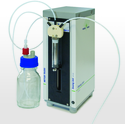Principal Scientist | Chemical Process Development (CPD) | Bristol Myers Squibb
View LinkedIn
Geoff Purdum is a Principal Scientist in the Chemical Process Development (CPD) department at Bristol Myers Squibb (New Brunswick, NJ). Geoff is a member of the Reaction Science and Engineering group within CPD, focusing on building process knowledge using real-time analytical tools. Geoff joined BMS in 2018 after completing his Ph.D. in Chemical Engineering at Princeton University, where he studied polymorphism in molecular semiconductor thin films (w. Prof. Lynn Loo). Geoff also holds a B.S. in Chemical Engineering from the University of Massachusetts-Amherst.




